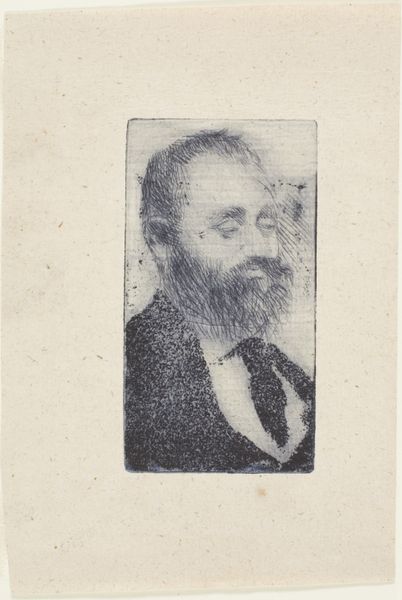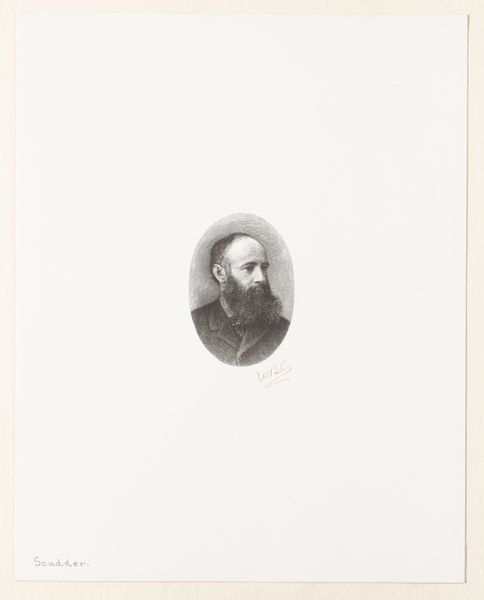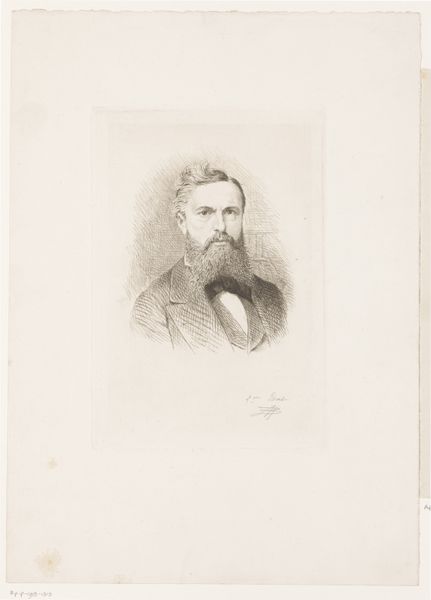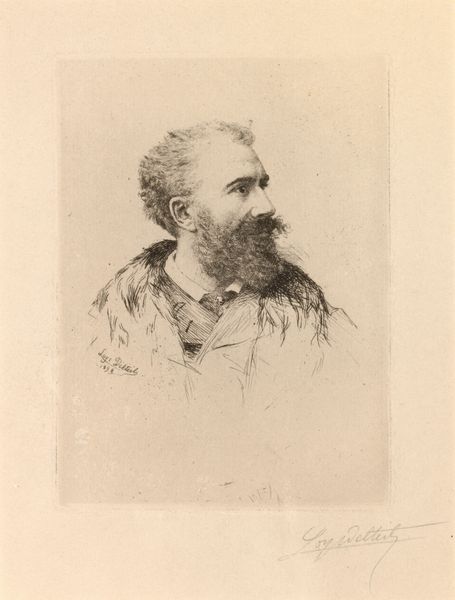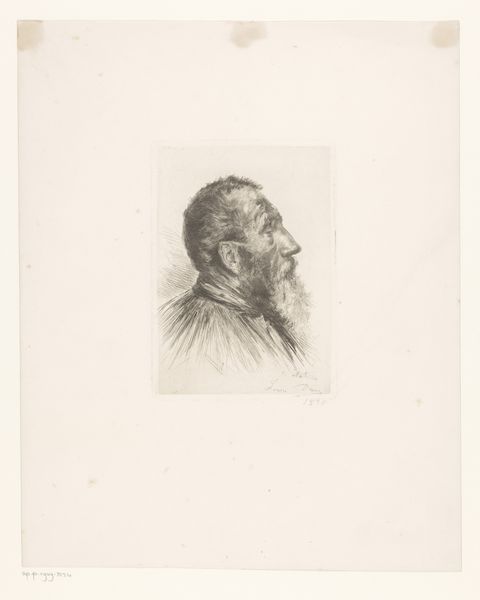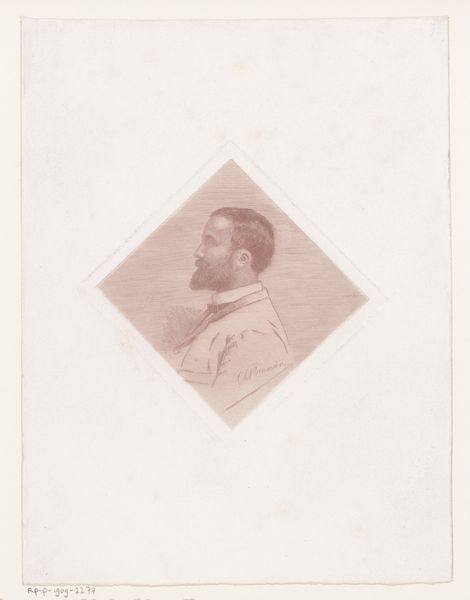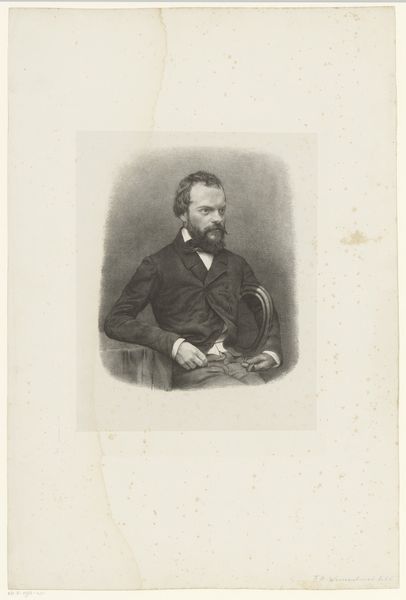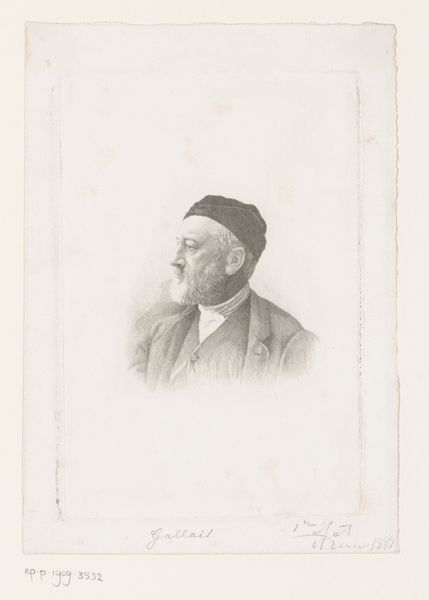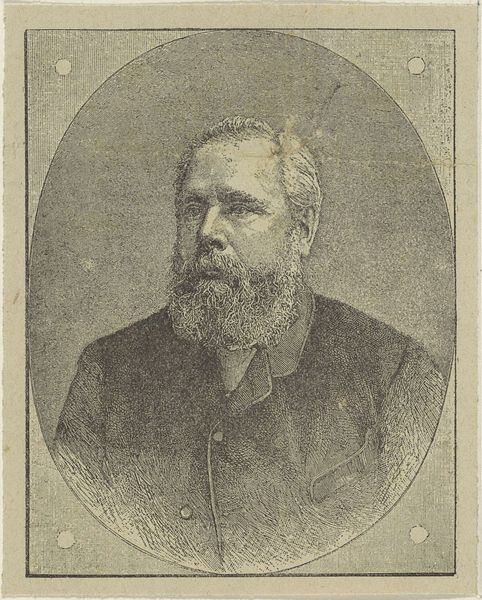
Dimensions: height 32 mm, width 28 mm
Copyright: Rijks Museum: Open Domain
This etching of a bearded man was made by Jean-Pierre Norblin de la Gourdaine sometime between the late 18th and early 19th centuries. Norblin made the print by coating a copper plate with wax, then drawing through the wax to expose the metal. When the plate was dipped in acid, an image was bitten into its surface. Ink was then applied, and the plate was pressed against paper. Look closely, and you'll see how the lines vary in thickness. This was achieved by varying the amount of time the plate was exposed to the acid. The technique of etching was well-suited to the industrializing world. It allowed for the relatively easy reproduction of images, which could then be circulated widely. While Norblin was not exactly an industrial producer, he took full advantage of printmaking to disseminate his images, blurring the line between unique work and multiple. This simple image offers a glimpse into the democratizing potential of art in the modern age.
Comments
No comments
Be the first to comment and join the conversation on the ultimate creative platform.


